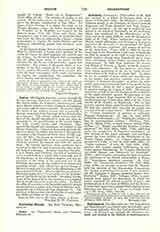

Sexton (Old English Sexestein, sextein, through the French sacristain from Lat. sacrista), one who guards the church edifice, its treasures, vestments, etc., and as an inferior minister attends to burials, bell ringings and similar offices about a church. In ancient times, the duties of the modern sexton, who is generally a layman, were part of the functions of the clerical order of ostiariatus. The clerics called ostiarii had the keys of the church committed to them and were responsible for the guardianship of the sacred edifice, the holy vessels, books, and vestments. They opened the church and summoned the faithful to the Divine Mysteries. Others of them were specially deputed to guard the bodies and shrines of the martyrs. According to the Council of Trent (Sess. XXIII, cap. xvii, De Ref.), the sexton or sacristan should be a cleric, but it allowed him to be a married man, provided he received the tonsure and wore the clerical dress. By custom, however, these conditions have ceased to be effective, and at present the office is usually held by a layman. In many cathedral churches, e.g. in Austria and Germany, the title of sacristan or custos is still held by a priest, who is generally one of the dignitaries of the cathedral chapter, and has supervision of the fabric of the cathedral and of the buildings that serve for the residences of canons and parochial vicars. This official has special charge of the cure of souls and sees also to the solemnizing of the great church festivals. He generally has an assistant, whose particular duty it is to watch over the performance of the Divine service in choir. According to a decision of the Roman Rota, the sacristan of a cathedral church should always be in priest’s orders. In Rome the office of sacristan in the Apostolic palace is always committed to a member of the Order of Hermits of St. Augustine, by a Decree of Pope Alexander VI. The sacristan of the conclave for the election of a new pope has all the privileges of the conclavists.
WILLIAM H. W. FANNING

